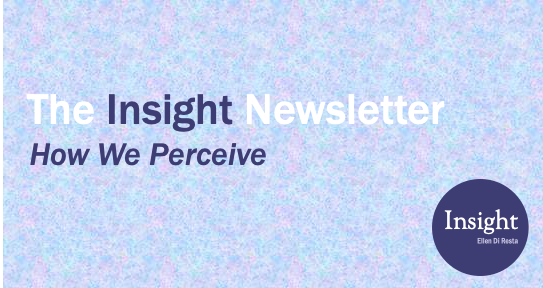Wassily Kandinsky’s paintings are often cited as good examples of capturing the collective anxiety and uncertainty that dominated the culture in Europe right before WW1, as well as the re-ordering and structural shifts that occurred post-war.
What is it about his art that enables it to evoke similar feelings to the collective mood in society at that time? There are two fields that may help us to understand how we experience art, music, literature, or any other creative work: Synesthesia and Neuroaesthetics.
Synesthesia is the sensorial crossover experienced by 2%-4% of the population. For example, people with synesthesia may hear sounds when they see specific colors, or they may experience a taste when they hear a sound. In our day-to-day language, idiomatic expressions often have synesthetic references such as “I felt her gaze upon me,” or “success was so close I could taste it.”
Dr. Richard Cytowic, a leading researcher on synesthesia, describes this sensorial crossover this way – “Far from being a mere curiosity, synesthesia is a consciously elevated form of the perception that everyone already has.”
Kandinsky was also said to have had synesthesia, and he could supposedly hear sounds when he painted the colors and shapes on the canvas. Even today it is not uncommon for people to describe his art as a “visual cacophony.”
While synesthesia offers a vivid example of how some people perceive experiences, everyone creates a perception based on what they see, hear, smell, touch or taste. Regardless of how we perceive, the question remains as to how this perception can be intentionally created.
The growing field of Neuroaesthetics is seeking to understand how this type of communication is experienced. Technically, Neuroaesthetics is defined as an intersection between classic neuroscience and the psychology of perception. I was first introduced to the field through the work of Semir Zeki at University College of London. I had interviewed Professor Zeki in October 2012 for a book chapter I was writing about Innovation and Neuroscience. Here is a short excerpt from that chapter:
Neuroaesthetics is a relatively new field being pioneered by Professor Semir Zeki. Neuroaesthetics uses neuroscience to explain and understand aesthetic experiences at the neurological level. It also uses art to understand something about the brain. Zeki describes Neuroaesthetics as the way that artists use their brains to communicate to our brains. He adds that this form of communication requires a unique and interesting intelligence that transcends most forms of communication that are explicitly recognized by the general public.
More recently, the University of Pennsylvania, and Harvard University are also doing interesting work in this field.
What do synesthesia and neuroaesthetics have to do with product design and innovation strategy? In my experience… they have everything to do with it.
To get a sense of this experience, let’s try an example:
In my years of using this example, most people would want to fly in an airline represented by the painting in the middle. When asked which painting they prefer, however, the responses are much more varied.
The difference in responses when people are asked for their preference as opposed to being asked to select for a specific goal is what matters when we design products and services. Every product or service is evoking a perception that is based on how it looks, how it is accessed, purchased, marketed, etc.
Any inconsistencies cause the customer to perceive that something is not quite “right” and results in poor market performance. This is where so many products and services fail, even if they are proven to technically deliver valued benefits.
How do we ensure that the products and services we design will communicate our intended message? Traditional advertising and PR are used to promote a product, service, or idea. But promoting an espoused benefit is very different from delivering an espoused benefit – and a large part of the delivery is ensuring that every element of the experience is perceived to be consistent with the benefit.
This is the skill that is largely overlooked in traditional product development, and when it is used well we can realize great market results. Also from the Zeki interview:
“… while it is difficult to articulate this skill, it becomes obvious when it is there.”
As the field of neuroaesthetics develops, I hope we will find better way to reliably describe, identify, and teach this talent. It can have a huge impact on how well good ideas are translated into products that perform well in the market.
In a previous newsletter I noted that most products fail because there is no market need. Could it be that these products are not perceived to be credibly able to satisfy the intended market need?



